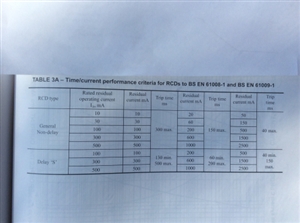It goes up to 500 when set to x 1 but that's 100 short of 600 needed for the x 2 test.
Don't know if other testers will allow the VAR to be set higher.

The outcome is that many electricians rarely, if ever, test time delayed RCDs so don’t concern themselves about the issues regarding testing them.
If you are testing a 100 mA S-type time delayed RCD you need to use the correct test with the countdown timer, if you start fiddling about testing at x 0.5, x 1 and x 5 you will end up with different test results which are not correct, I have been told that by both RCD manufacturers, tester manufacturers and other reputable sources.
We're about to take you to the IET registration website. Don't worry though, you'll be sent straight back to the community after completing the registration.
Continue to the IET registration site